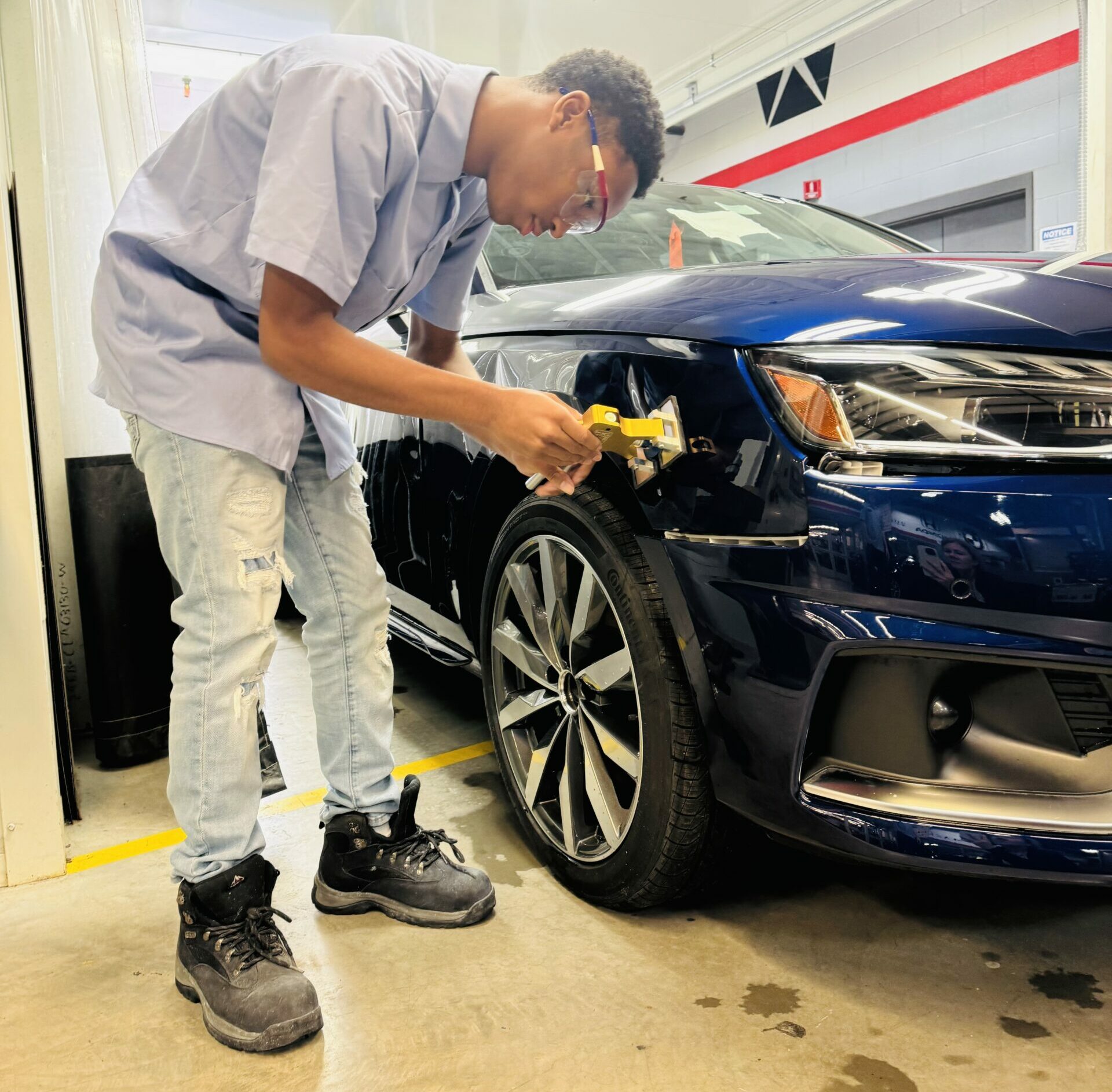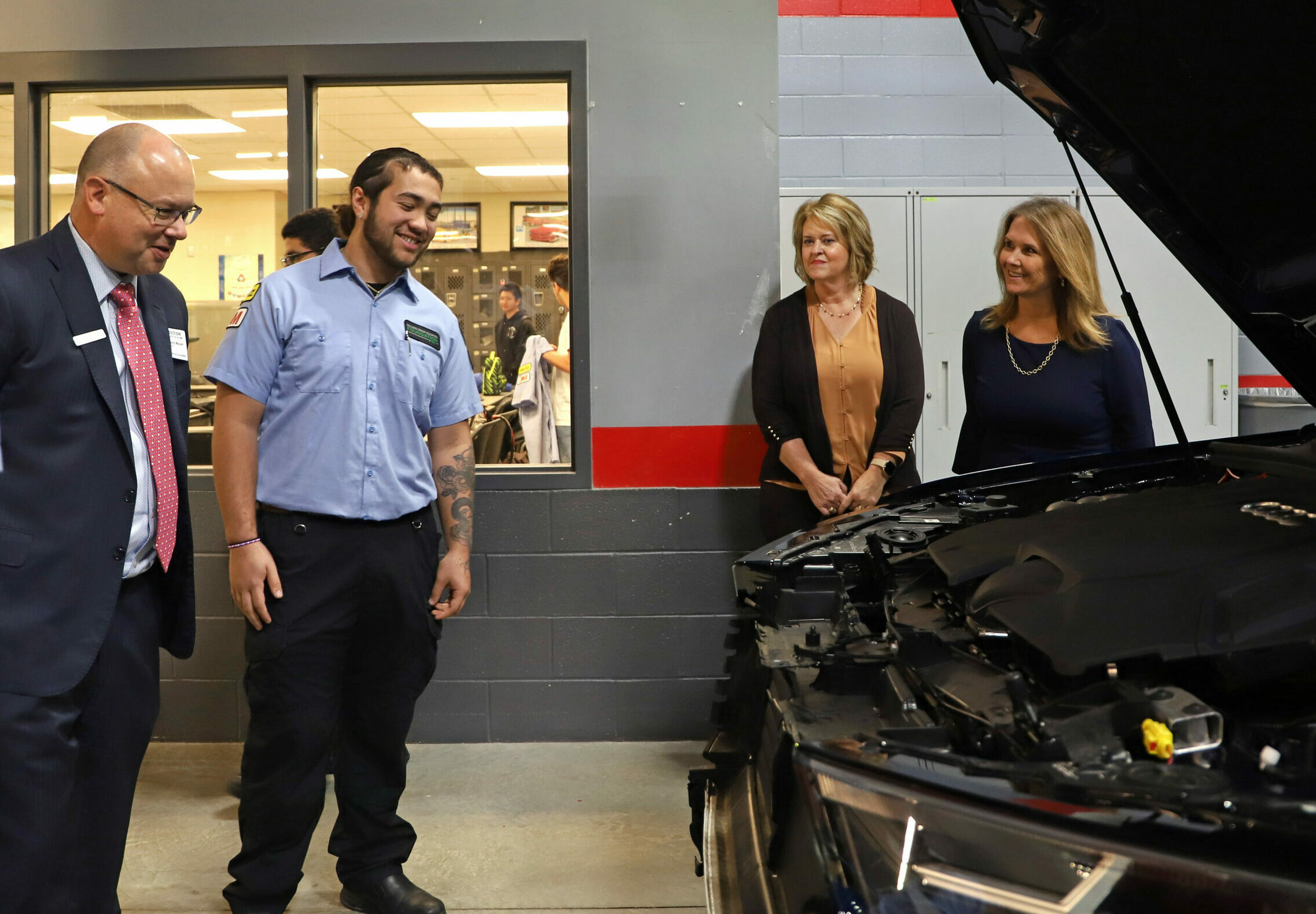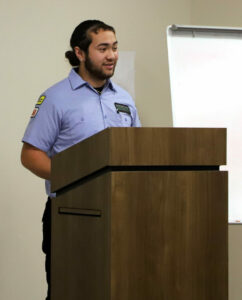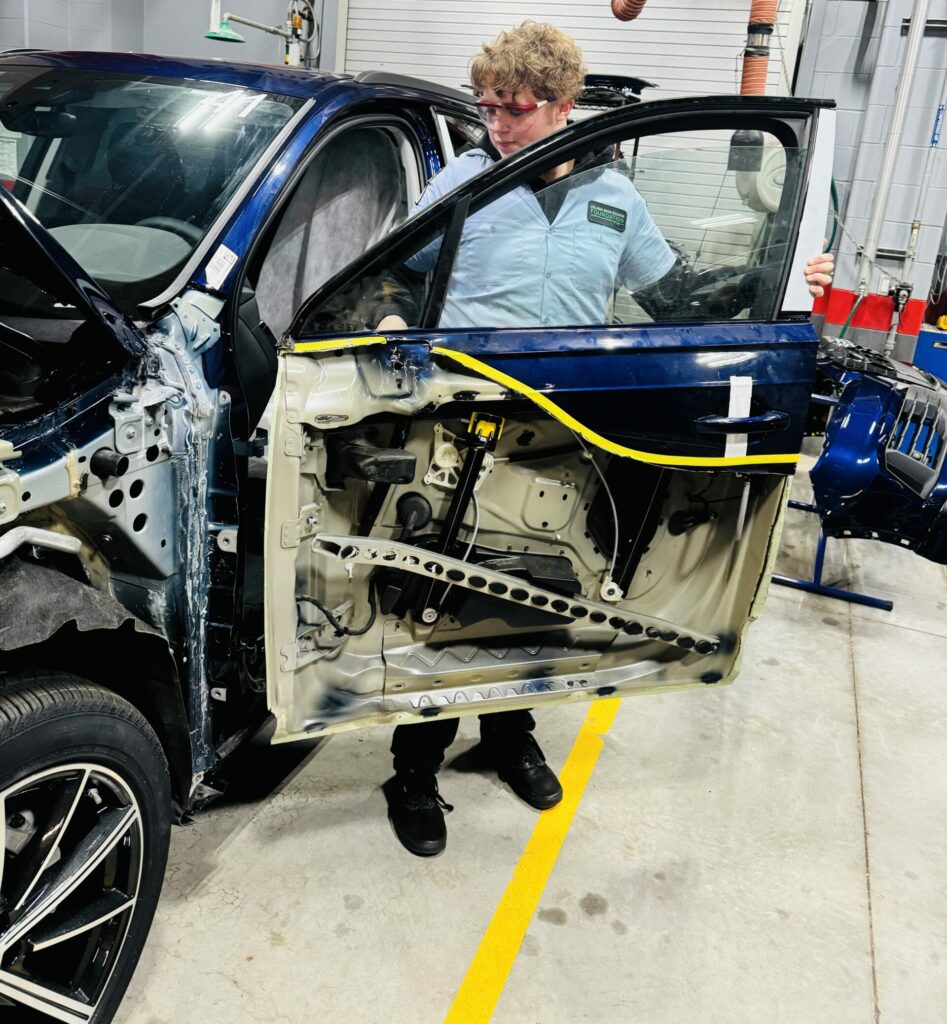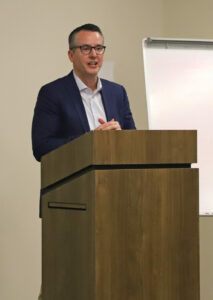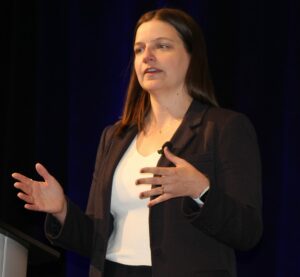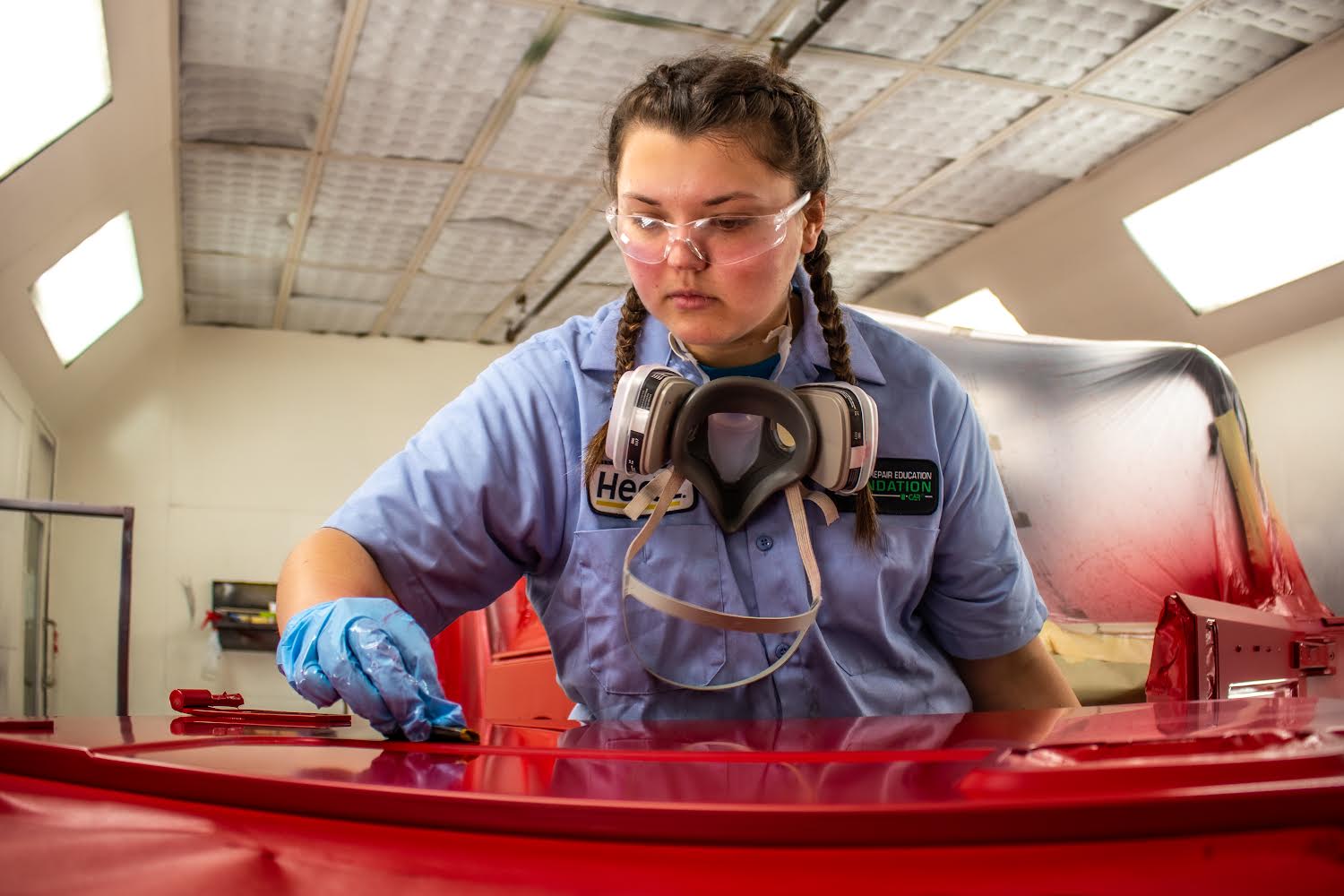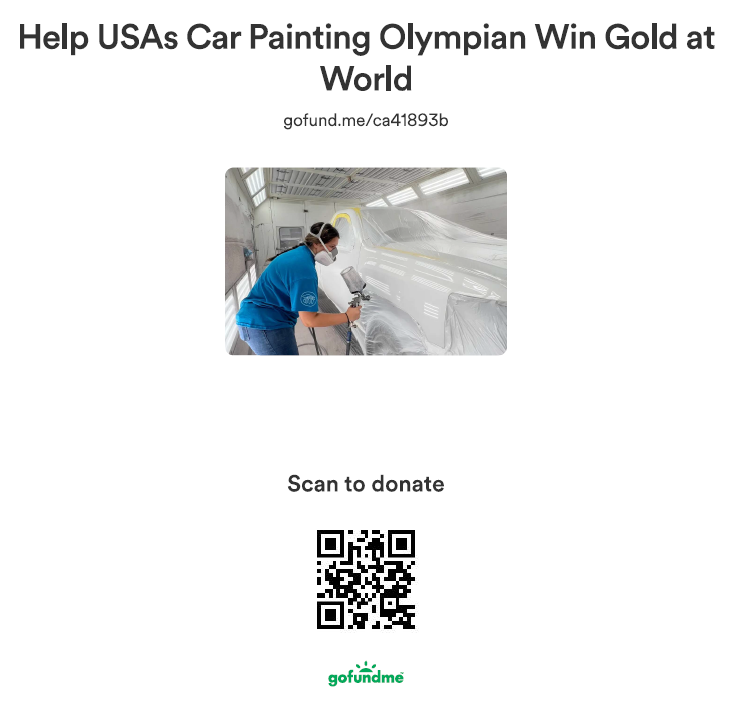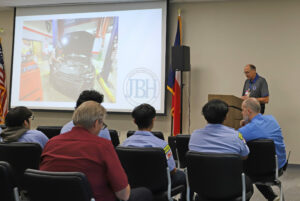
Emerging automotive tech touted as opportunity to attract & recruit technical talent
By onEducation
While the results of a recent survey by the Society of Collision Repair Specialists (SCRS) and I-CAR show that collision repair technician career satisfaction is influenced, both positively and negatively, by a variety of cultural factors within their business, they’re more inclined to stay in the profession when they have more of an opportunity to work on technologically-advanced, newer model year vehicles.
“There’s definitely a correlation between how much training technicians have gotten on new technology and their excitement about it,” said Meredith Collins, Ducker Carlisle managing director. “The more you understand it and the more you know about it, the more excited you are. Getting technicians exposure to it and some training, even if it’s not something that they’re working on immediately, does a lot to one, make them more comfortable with it and two, get them that excitement of long-term career trajectory — ‘Oh there’s a future here, there’s these different paths. I’m always learning. I have new opportunities to grow my skills.'”
The survey was available for technicians to take online in July and August. There were 839 respondents. Ducker Carlisle compiled the results and presented some of the highlights during the Collision Industry Conference (CIC)’s November meeting in Las Vegas.
Career satisfaction, compensation, and career feedback were the focus areas of the survey. Key topics were experience, workload, compensation, satisfaction, emerging technology, network support, training, and tools.
Earlier this year, with the help of the Collision Repair Education Foundation (CREF), Audi and Volkswagen donated 78 model year 2022 vehicles to collision repair programs located in Texas, Maryland, Michigan, New Jersey, Tennessee, and Virginia to give students the chance to work on brand-new vehicles equipped with technology they may have never had the opportunity to learn about firsthand.
The vehicles were damaged during shipping, and though intact and functioning, weren’t fit to be sold, but the automakers saw the educational opportunity in donating them to repair programs. The vehicles range from large SUVs like the Audi Q7 to smaller cars like the Audi A3, including both internal combustion engine (ICE) vehicles and electric vehicles (EVs), such as the Volkswagen ID.4 and Audi e-tron.
CREF Executive Director Brandon Eckenrode told Repairer Driven News most schools, on average, only have access to vehicles that are 10 years old.
In November, CREF celebrated the donations with students, administrators, collision repair industry professionals, and the community at an event held at JB Hensler College and Career Academy in Texas. JB Hensler received 10 Audi vehicles, some of which were on display so students and others could see the technology newly available to the program.
Erik Woods, a high school senior and student in JB Hensler’s collision repair program, spoke at the event.
“They are complex vehicles and they are much more difficult to work on compared to our old ones,” he said. “We greatly appreciate all the donations. To be a successful auto and collision technician, we must be able to learn, adapt, and communicate with newer vehicles.”
Scott Pollard, JB Hensler auto tech and auto body teacher, said before they received the new Audis, the newest vehicle students had access to was 2016.
“We had to put batteries in some of them and we came to find out that they were 48-volt systems and they had to be adapted,” he said of the donated EVs. “None of the other cars we had had any of that technology. Even simple things like changing the oil, there’s no dipsticks in the [ICE] cars or anything like that. They all have to be done either on a scanner or remotely… Much better than anything we’ve ever had. It’s phenomenal.”
Pollard said the school was incredibly excited and surprised to receive as many vehicles as they did and is appreciative of the ongoing support from Volkswagen Group of America, Audi of America, Sewell Audi and Sewell Collision locations in Sugarland, Katy, and Houston, Texas as well as Central Houston Audi in learning how to work with the new materials and advanced driver assistance systems (ADAS) on the cars.
“Everything seems to be a lot of aluminum,” he said. “We have some aluminum equipment we haven’t used it as much as we would like to so now we’re going to be able to use a lot of that. Even just R&I, parts, and stuff like that, there’s just a lot more to it when you follow the instructions.
“They are just loaded with ADAS features. This is the first year I really have taught ADAS repair as far as the systems and how to treat them, what to watch out for, and knowing that they have to be calibrated.”
When the schools are done with the vehicles they will be given to local first responders for extrication training on proper cut points and hazards. The remains will be recycled.
Pollard and Eckenrode encourage collision repairers to get more involved by joining collision repair program advisory boards; interacting with students, not just high school and post-secondary, but also middle schoolers and even elementary age, and finding ways to build excitement around emerging vehicle technologies, perhaps through shop tours.
“I’ve been in this 35 years and I’ve seen lots of collision programs disappear — a lot of good collision programs have disappeared because they’re expensive,” Pollard said. “We have somewhat of a bad reputation because there’s a lot of auto mechanics programs, but people don’t understand collision for one, and it’s not advertised well.
“We’ve kind of been our own worst enemy a lot of times in the collision industry. We have a really active advisory group and that has been tremendously helpful; they will hire a lot of people, but there’s a vacuum of technicians out here. The more these cars change, the more money that’s going to be there [for technicians] and more [job] security… I don’t think the consumer knows near enough about it — what really is involved, what it takes to repair the cars, what’s safe. People have no idea about ADAS.”
A 2022 survey commissioned by the Collision Engineering Program (CEP) indicated that there is a lack of awareness about collision repair careers, although people are open to exploring them. It found just 17% of survey respondents were “very familiar” with collision repair or engineering. The survey revealed that those who were familiar with the industry were more likely to pursue a career within it.
The industry is also challenging to start in, mostly because of the front-end substantial tool investment to each future technician, and the money earned by an entry-level tech is around the same as what can be made at a grocery store, Pollard said.
Eckenrode added that programs with professional learning environments are also important to give them an idea of what it will be like to work in a shop, such as new epoxy floors, a fresh coat of paint on the walls, and wearing uniforms. Schools are always open to scrap part donations, especially much-needed bumpers, fenders, and hoods for students to practice on, he added.
It’s important to emphasize as well that becoming part of the collision repair industry doesn’t necessarily mean working on cars. Eckenrode said other careers can be as an estimator; working at insurance, rental, tool, equipment, or paint companies, or in sales or communications.
Collins said, overwhelmingly, comments from dissatisfied refinish technicians (the least satisfied segment with structural and non-structural/body technicians not far behind) mention needed upgrades and/or investment in facilities, tools, and equipment.
Some of the answers the survey question, “What could your repair facility do to help you as a technician?” include:
-
- “Provide the right tools to do jobs efficiently and correctly;
- “Just upkeep current building;
- “Up-to-date measuring equipment, MIG welders that are maintained regularly, aluminum repair equipment, frame pulling attachments, user-friendly scanners, maintained paint booths; and
- “Nearly every single if not ALL facilities I’ve been at do not have the proper tools and materials.”
“Such a big thing is just giving technicians a clear understanding of what their career path could look like so they’re not just starting out and then feeling like, ‘OK, I know where I am and I see where other people in the shop are, but I don’t really know how they got there.’ Or, ‘I don’t know what possibilities are outside of my work as a technician,'” Collins said.
“Giving people a really clear career path of ‘Here are some different options for you and what it takes to get there’ is really beneficial for longer-term retention… ‘you need to take XY and Z training’ or ‘you need to learn this skill’ or ‘you need to go down this path of different learning…’ [then] making that clear for them, helping them understand what those requirements are, and to whatever degree you can help them actually complete those trainings.”
Making the day-to-day more exciting is crucial as well, Collins added.
“This is an ever-growing and ever-changing and evolving industry so there’s always going to be new technologies coming out,” she said. “There’s always going to be new tools, new systems, new components, and new aspects of the job — really promoting that, both from the recruitment perspective… [and] for existing technicians, that keeps them engaged.”
Another way to back the future industry workforce is by supporting programs like SkillsUSA and WorldSkills International.
Lily Williams, of Arkansas, won gold in the automotive refinishing category during this year’s national career contest, which brings together the most highly skilled career and technical education students in high school and college from across the U.S. She will represent the U.S. team in car painting at the 2024 WorldSkills Competition, held in France in September, but she needs help to be able to compete.
Williams, who has put off going to college to focus on the competition, needs monetary support of at least $20,000 to go.
Ways to donate:
- GoFundMe fundraiser: gofund.me/faa1d271;
- Directly via SkillsUSA: worldskillsusa.org/donate/, and write ‘car painting’ in the gift preference box;
- Request that SkillsUSA send a direct invoice for a donation.
The funds will allow Williams to purchase equipment and materials; attend training; pay for airfare, room, and board, and compete at what’s known as “international friendly competitions,” which allow WorldSkills participants a chance to test how well they work under pressure ahead of the final competition.
The U.S. has never competed at the world level in the refinish category but “we can change that by coming together to support Lily Williams & the Car Painting USA World Skills Team,” wrote Jessica Neri, Automotive Refinish Technology SkillsUSA Competition co-chair, on the GoFundMe page.
Images
Featured image: JB Hensler College and Career Academy teacher Scott Pollard speaks during a Nov. 14 event at the school to celebrate Audi’s donation of 10 vehicles to the collision repair program. (Provided by CREF)
A JB Hensler student works on a 2022 Audi vehicle in the school’s shop. (Provided by CREF)
JB Hensler student Erik Woods shows off a 2022 Audi vehicle during a Nov. 14 event at the school. (Provided by CREF)
A JB Hensler student works on a 2022 Audi vehicle in the school’s shop. (Provided by CREF)
Lily Williams paints her Jeep in her high school shop class. (Provided by Lily Williams)

